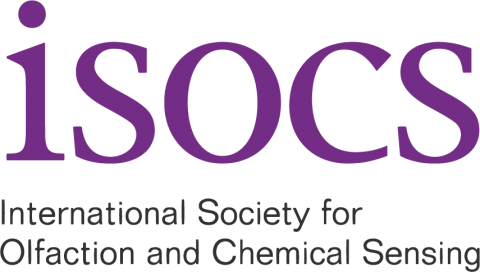
Olfaction, the forgotten sense
Pablo Meyer Rojas, IBM
Abstract: The sense of smell has been ignored and even misbegotten since the positivist revolution of the XIX century. Indeed, studies of comparative neuroanatomy of the famous french neurophysiologist Paul Broca lead him to conjecture that in comparison with that of other animals, the human sense of smell was widely considered weak and underdeveloped. This is based in part on the fact that compared to the rest of the brain the human olfactory bulb is small. A modern look at the human olfactory bulb shows that it is quite large compared to those of rats and mice, which are supposed to possess a superior sense of smell. In fact, the number of olfactory bulb neurons across 24 mammalian species is comparatively similar to that of humans and our sense of smell is similar to that of other mammals. The last 20 years have brought remarkable advances in the science of olfaction, from the discovery of olfactory receptors to the characterization of olfactory circuits, the development of smell detectors or eNoses and the recent breakthrough regarding the predictability of odors from the structure of molecules. Still the prevailing view is that humans’ capacity to identify or characterize odors by name is poor. Paradoxically, I will discuss here that applying natural-language semantic representations allows for the accurate inference, using state-of-the-art machine learning methods and the two largest olfactory psychophysical data sets, of perceptual ratings for mono-molecular odorants over a large and potentially arbitrary set of olfactory descriptors. Combined with a molecule-to-ratings model using chemoinformatic features, our approach allows for the zero-shot learning inference of perceptual ratings for arbitrary molecules. I will further discuss how to expand these results to molecular mixtures and real-world applications.
Biography: Pablo is a Team leader in the Translational Systems Biology and Nanobiotechnology group and Research Staff member in the IBM Computational Biology Center. He joined IBM research in 2010 and received his Undergraduate degree in Physics from the University of Mexico UNAM (2000) and a Masters degree from the University of Paris VII/XI his Ph.D. in Genetics from the Rockefeller University (2005). He was awarded a Helen Hay Whitney fellowship as a postdoctoral fellow in Columbia university.
Human Olfactory Receptor-Based Bioelectronic Nose
Tai Hyun Park, School of Chemical and Biological Engineering, Seoul National University, Seoul, Korea
Abstract: Human has major five senses. Three of them are physical senses, which are senses of vision, hearing, and touch. The other two senses are chemical senses, which are senses of smell and taste. Science and technology for the physical senses have been advanced enormously, and electronic devices have been developed for these senses. Camera can capture the sight which we see. Audio recorder can capture the sound which we hear. Tablet PC can feel our touch. These three kinds of devices are in our smart phone. However, we do not have any device which can capture the information of smell or taste. The sense of smell has been the most mysterious sense; however, now we understand the smell sensing mechanism at the molecular level. In order to mimic the human olfactory function, we can use human olfactory receptors, which are expressed in heterologous systems such as E. coli, insect cell, and mammalian cell systems. The olfactory receptors can be combined with nanomaterials such as carbon nanotube, conducting polymer nanotube, and graphene to develop bioelectronic nose. I will present various methods for the development of bioelectronic nose using human olfactory receptors. In addition, applications and current issues of bioelectronic nose will be discussed.
Biography: Tai Hyun Park is Professor and Head at the School of Chemical and Biological Engineering, Seoul National University, and also Director of Institute of Chemical Processes. He received his B.S. degree (Seoul National University), M.S. degree (KAIST), and Ph.D. degree (Purdue University) all in Chemical Engineering, and was a postdoctoral fellow at the University of California at Irvine. He is a member of The Korean Academy of Science and Technology (KAST) and also a member of The National Academy of Engineering of Korea (NAEK). He is a Fellow of the University of Tokyo, Japan. He is serving as Editor of “Biotechnology Journal (Wiley)” and “Enzyme and Microbial Technology (Elsevier)”. He served as Appointed Director of National Research Council of Science & Technology. He is Secretary General of Asian Federation of Biotechnology (AFOB) and was President of The Korean Society for Biotechnology and Bioengineering (KSBB), President of Advanced Institutes of Convergence Technology (AICT), President of Bio-MAX Institute, and President of KOFAC (Korea Foundation for the Advancement of Science and Creativity). His research area is bioelectronic nose and tongue, cellular engineering, and nanobiotechnology.


